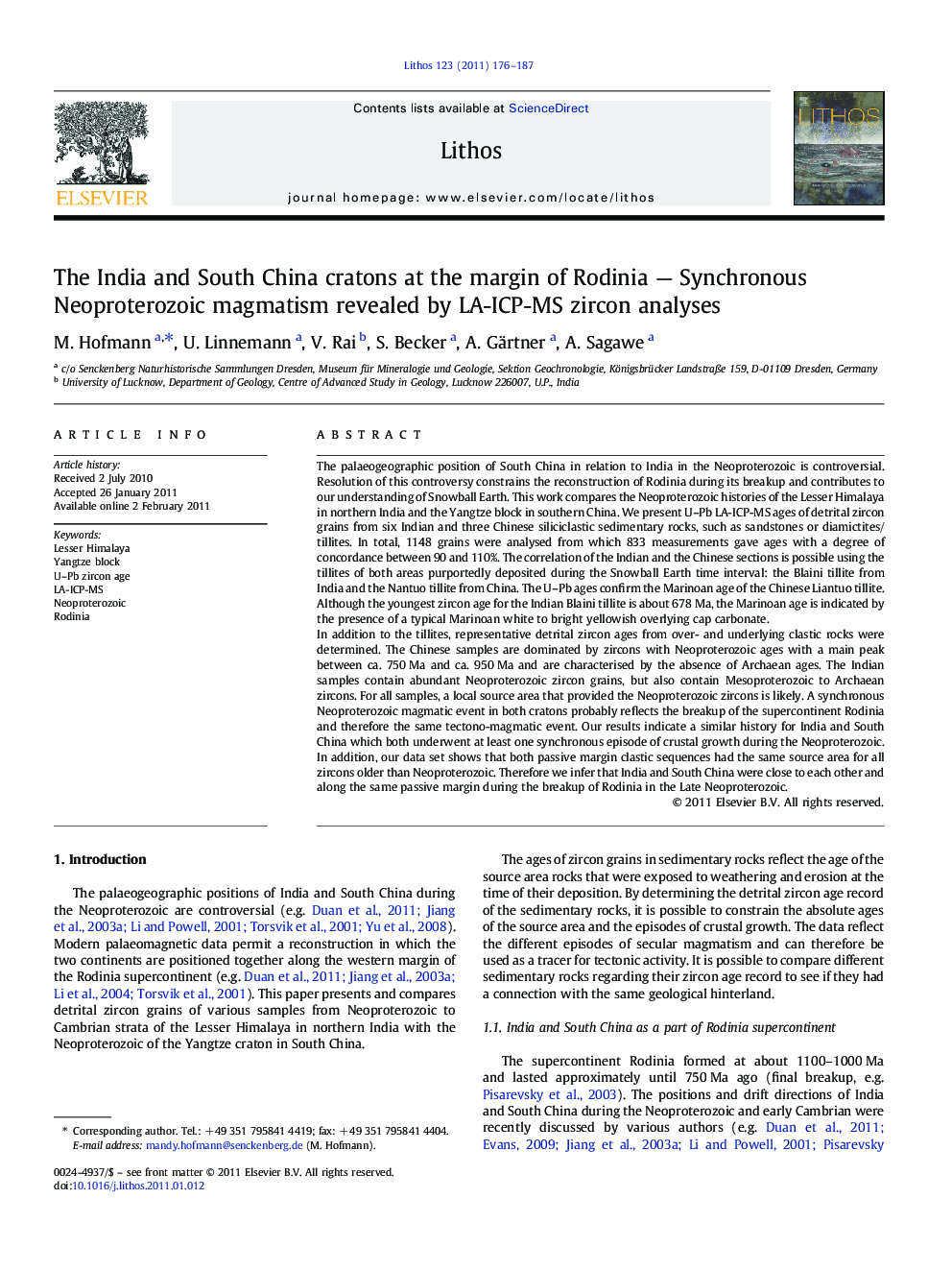| کد مقاله | کد نشریه | سال انتشار | مقاله انگلیسی | نسخه تمام متن |
|---|---|---|---|---|
| 4716795 | 1638722 | 2011 | 12 صفحه PDF | دانلود رایگان |

The palaeogeographic position of South China in relation to India in the Neoproterozoic is controversial. Resolution of this controversy constrains the reconstruction of Rodinia during its breakup and contributes to our understanding of Snowball Earth. This work compares the Neoproterozoic histories of the Lesser Himalaya in northern India and the Yangtze block in southern China. We present U–Pb LA-ICP-MS ages of detrital zircon grains from six Indian and three Chinese siliciclastic sedimentary rocks, such as sandstones or diamictites/tillites. In total, 1148 grains were analysed from which 833 measurements gave ages with a degree of concordance between 90 and 110%. The correlation of the Indian and the Chinese sections is possible using the tillites of both areas purportedly deposited during the Snowball Earth time interval: the Blaini tillite from India and the Nantuo tillite from China. The U–Pb ages confirm the Marinoan age of the Chinese Liantuo tillite. Although the youngest zircon age for the Indian Blaini tillite is about 678 Ma, the Marinoan age is indicated by the presence of a typical Marinoan white to bright yellowish overlying cap carbonate.In addition to the tillites, representative detrital zircon ages from over- and underlying clastic rocks were determined. The Chinese samples are dominated by zircons with Neoproterozoic ages with a main peak between ca. 750 Ma and ca. 950 Ma and are characterised by the absence of Archaean ages. The Indian samples contain abundant Neoproterozoic zircon grains, but also contain Mesoproterozoic to Archaean zircons. For all samples, a local source area that provided the Neoproterozoic zircons is likely. A synchronous Neoproterozoic magmatic event in both cratons probably reflects the breakup of the supercontinent Rodinia and therefore the same tectono-magmatic event. Our results indicate a similar history for India and South China which both underwent at least one synchronous episode of crustal growth during the Neoproterozoic. In addition, our data set shows that both passive margin clastic sequences had the same source area for all zircons older than Neoproterozoic. Therefore we infer that India and South China were close to each other and along the same passive margin during the breakup of Rodinia in the Late Neoproterozoic.
Research Highlights
► Main source for the Neoproterozoic Indian and Chinese samples is local bedrock.
► Synchronous magmatism in India and China was probably due to Rodinia breakup.
► We suggest a juxtaposed position for India and China along the Rodinia margin.
► Facies analyses suggest a proximal India and a distal South China craton.
► Zircon U-Pb- and Hf-data suggest Neoproterozoic input of juvenile material.
Journal: Lithos - Volume 123, Issues 1–4, April 2011, Pages 176–187